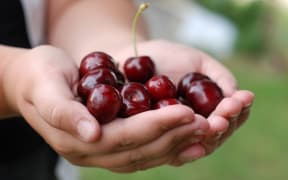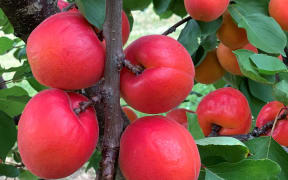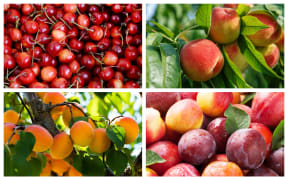
Apricot trees in new new two-dimensional structure. Photo: Supplied / Craig Robertson
A new orchard planting system that increases yields with a two-dimensional structure is being trialed by Central Otago fruit growers.
Trees in traditional orchards trees are three dimensional and have rows between them of about 3-4 metres so machinery can go up and down - but that method means valuable sunlight is being used to grow grass in the rows.
Plant and Food Research has developed 'The Future Orchard Planting System' to fix that.
Senior scientist Dr Jill Stanley said the system brings pipfruit and summerfruit orchard rows closer together.
"By growing the trees in a two-dimensional structure will ensure good light penetration into the whole canopy, thereby ensuring uniform high quality fruit."
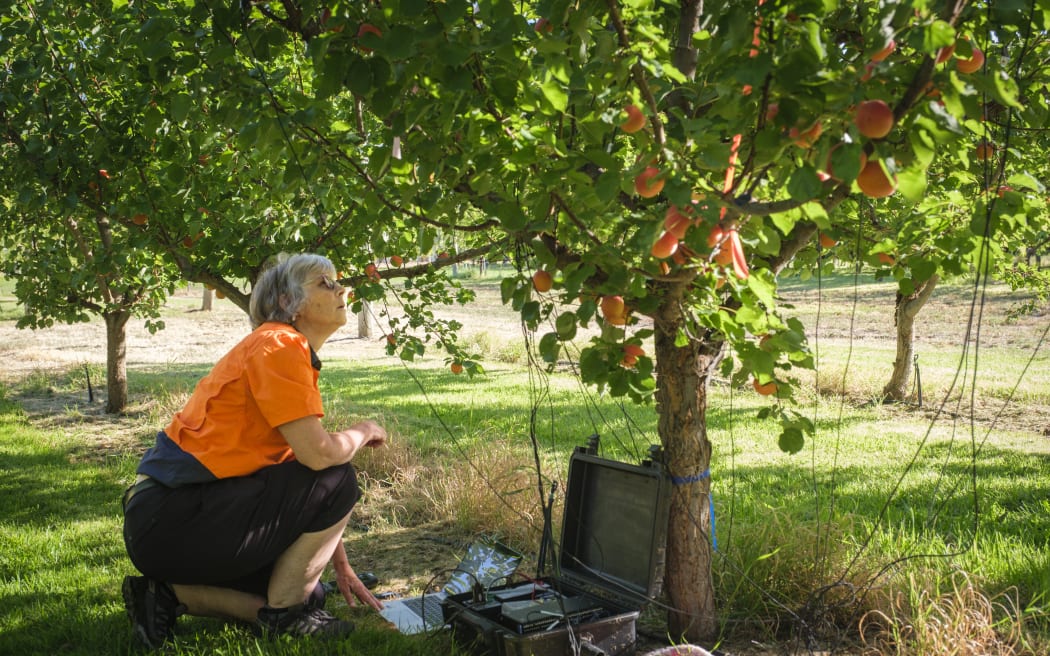
Scientists have been closely following the results of the new systems. Photo: Supplied / Craig Robertson
Stanley said trails of the planting system in cherry and apricot orchards have proven successful and now it was being used with apples and pears.
"Many new apple, apricot and cherry commercial orchards are utilising the new system, or in the case of cherries a similar iteration of it known as the UFO growing system.
"Both take a two-dimensional approach to canopy structure and are better suited to accommodate automation and robotics than a conventional orchard because fruit is more easily accessible."
Having more trees in an orchard means the planting system increases yeilds and productivity.
Stanley said they had been gathering data from research trials, but it would not be until the planting system is used in big blocks that the full scale will be known.
"We've certainly seen increased yeilds, for apples it's about double and for cherries it's about a 50 percent increase."
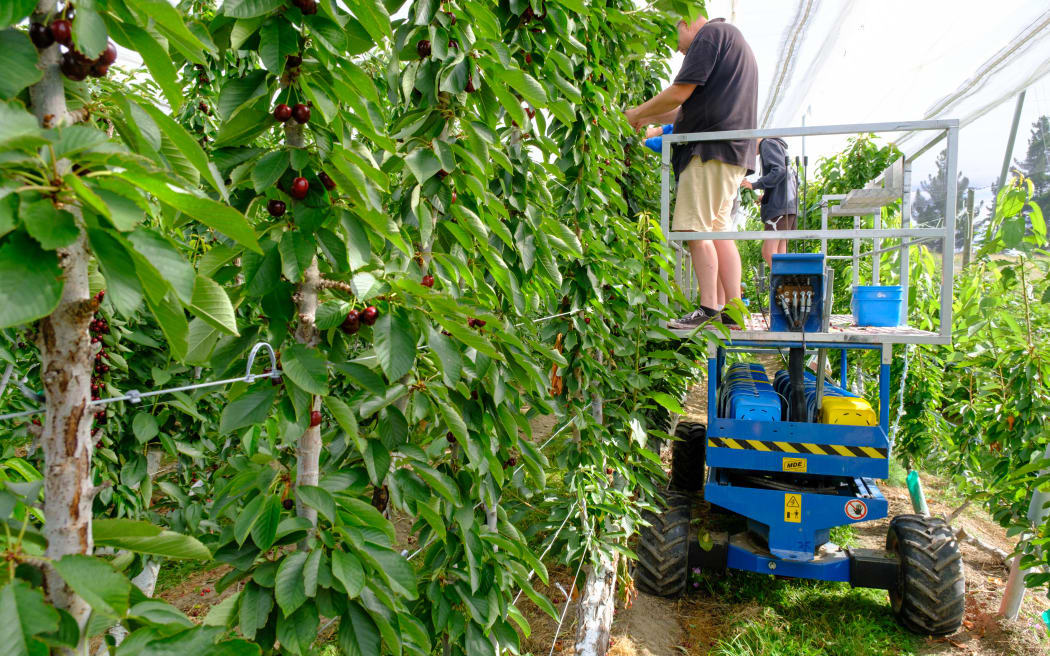
Mobile platform picking of cherries on Earnscy Weaver Orchard, Otago Photo: Supplied/ Craig Robertson
The planting technique has also proven to be more accessible for automation and robotics.
"For robots to be able to assess each fruit they need to be able to see them and reach them easily - in a three dimensional canopy the fruit is often hidden from the robot.
"So we talked to engineers who said a simple architecture was much easier for the robots to be able to see the fruit easily."
Stanley said the benefits of orchards being robot ready could be huge in the coming years.
"We're already seeing significant advancements in technology on orchards, and we think having the right growing system to support that infrastructure will be key going forward."
Plant and Food Research is spreading the word about the planting system through field walkthroughs with growers.
